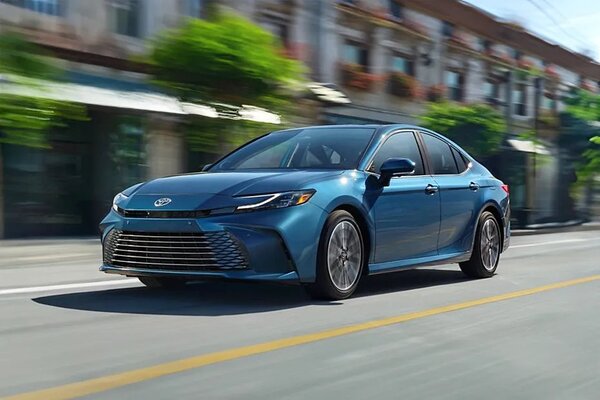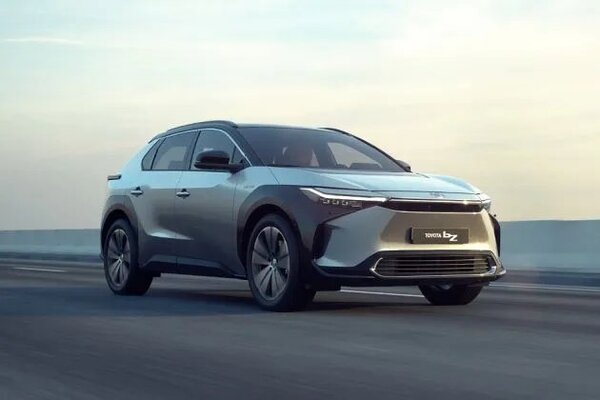Being ugly is a selling point for these tiny Japanese vans


Steve Pelletier recently sold his vintage Porsche 911 in order to spend more time on something not as fast, and not as pretty, but arguably more interesting: a 1994 Toyota Hiace van.
The Nike employee, who is based in Portland, Ore., became enamored with the obscure model line after a friend, Sam Simonis, let him drive his own Hiace (pronounced “high-ACE") home one night after going to watch Ford vs Ferrariwith the boys.
Also check these Cars
Now, after months of searching for one to import from Japan, poring over microvan tint-tone books, buying microvan lift kits, and accumulating microvan-sized, knobby, off-road wheels, Pelletier expects to take delivery of his own Hiace van—complete with amber-tinted windows and multitone browns painted on the body—next week.
During the coronavirus pandemic, he’s been working from home with multiple school-aged children while his wife, Laura, works at her deemed-essential office job. The timing couldn’t have been more perfect.
“They’re not fast or anything,but I already got a fast car," Pelletier says. “I really wanted something to work on, and this issuch a weird fun thing. I wanted to make it as Japanese as I could."
These days, he has many comrades in the adorable, strange, world of microvans. Simonis, a Portland-area farmer,recently found that the diminutive van he purchased in Seattle last year—complete with Toyota-branded ice-cube trays in its tiny, refrigerated console box—has replaced his Acura NSX in the daily driving rotation.
“These vans represent freedom and independence from being bogged down at home," agrees Danny Hellevig, who founded Vanlife Northwest in 2014. “Now, during all of this quarantine time, that is something that people do not want to sacrifice or let go of. What we have now is hope for a better future. The vans speak to that."
The Cute Van From Japan
Microvans can fit into the kei category, which are the smallest highway-legal passenger cars in Japan, but they also includeslightly larger JDM cousins—those made for the Japanese domestic market. Together, they comprise a tide pool in car aficionado circles that can be as deep and obscure to Westerners as Japanese anime culture. Made largely in Asia during the 1980s and ‘90s, these tiny passenger vans have names as fantastical as the vehicles themselves: Mitsubishi Delica Star Wagon, Toyota Hiace, Daihatsu Hijet, Suzuki Every, Honda Life.
Think of them asthe oddball-intellectual cousin ofthe mainstream Volkswagen vanagans and Westfalia campers that hatchedin popularity among surfers, rock-climbers, and couples who make money off Instagram Influencerpartnerships. More than a million photographs on Instagram have been hashtagged #vanlife, and feeds such as@Project.Vanlife, @VanlifeDiaries, and@Homesweetvanhave hundreds of thousands of followers.Microvans, on the other hand, report just over 5,000 tags.
But whereas the pleasures of #vanlife are often depicted witha character from central castingreaching Shangri-La levels of communion with his man bun,microvans are more likely to be photographed humbly crawling over muddy snow. They may beparked to exhibit purple-tinted windshields, lie-flat seats, and Japanese proverbs crudely translated to English written along the side. In Europe, they’re considered fringe, at best. Which, of course, is part of the appeal.
“I mean, aesthetically, you either love it or hate it," says Hellevig of his 1990 Toyota Hiace Super GL. “I love how ugly it is."
These Japanese vans are characterized by their easily park-able size—about the same length as a modern sedan. First they gained favor with farmers, delivery men, and urban workers for their practicality and reliability. Then a tuner culture sprang up: Enthusiast groups in Japan wouldmodifythem with loud tail pipes, performance upgrades, crazy wheels, and graphics the waylow-rider car clubs do in the U.S.Do a “microvan" search onlineand you’ll find some creatively funky body graphics that include, but are not limited to, stripes, mountain scenes, andtwo-tone or three-tone color schemes.
This particular segment emerged in the 1960s, when companies such as Mitsubishi introducedthe 1.1-liter Delica as a light “cabover" pickup with a payload of just over 1,300 pounds.(The van version came a year later.) By the 1970s, similar models from Honda, Suzuki, Daihatsu, and Toyota had evolved into a 12-foot-long-and-under group loosely comprisingdiminutive rigs with two swinging front doors, two sliding side doors, and an easyaccesstailgate. By the early 1980s, most came with diesel engines and four-wheeldrive.
“It’s slow, butit doesn’t bum you out to drive slow, because that’s what they’re designed for," says Simonis. “They’re so charming, it’sridiculous."
A Secret Fan Club
Until a few years ago, it was difficult to own a microvan this side of Kyoto. AU.S. law requiring cars under 25 years old to be brought up to modern American emissions and safety standards prevented them from being imported. It was just too complicated, expensive, and time-consuming to make it worthwhile, especially for a type of vehicle worth but a few thousand dollars, with no hope of significant gains in appreciation.
Now that the 25 year limithaspassed for some ofthe best examples, with the strongest engines and fewest miles—many of which were cared for meticulously bydevoted Japanese owners—it’s gameon.
“Awareness has definitely grown," Hellevig says. “I get more and more calls every day with regards to these vans. One month from the next I’ll get multiple more calls a day for these things." Wait times to get a van imported by his shop start at around three months and can last a year, along with a deposit that can range from $1,000 to$3,000 or more.
“There hasbeen a spike in popularity in the last few years," agrees Michael McGovern, who runs Roamer Northwest. “That might be a cultural thing.The outdoorsy van life culture is huge."
For under-40s who can’t afford a Lamborghini Countach or are bored with911s, the vans can provide a sort of psychic relief. They are easy to drive and minimal inside, andno emotional effort is neededto command one—unlike complicated, highly engineered,prohibitively valuable sports cars.
Nostalgia also plays a part formillennials buying them. On Hagerty.com,91% of the quotes for the Toyota Hiace came from Gen-Xers and millennials in the past 12 months. It was a similar percentage for the Mitsubishi Delica series, too.“We all sort of grew up with our parents doing this type of thing, and we want the feeling of yesteryear,"McGovern says. “The desire for minimalism is a huge thing right now. We are so entrenched in consumer culture that people look fondly back at these older, quaint things."
That applies especially to millennials like Pelletier, who have children.“This is just to putter around the Northwest, go road-tripping," he says. He plans to use it as the family car for excursions to national parks and wilderness areas, maybe even go as far as Alaska.
By the time he finishes with the import fees, upgrading the wheels and steering wheel, redoing the tinting, and lifting itwith parts from Roamer Northwest, he expects to have spent roughly $13,000. “Dudes are literally buying vans, importing them, and doubling their money," he says.
Still, vans such as the Star Wagon and Hiace are obscure enough to have cachet. Most can be best found at swap meets or by approaching strangers at Radwood-style car shows. Few sell at auction in the U.S.; just two Hiaces sold on Bring a Trailer in the past year, according to Hagerty. One from 1992 took $20,000; another from 1990 drew $7,200. The median quote value over that12-month period is $15,000, up 3.5% from the same period last year.
Mitsubishi Delicas are slightly more popular, but only three have sold at auction recently in the U.S. The top sale on Bring a Trailer was a 1993 Delica Star Wagon Turbodiesel 4x4 that took $12,750 last year.The second-highest sale happened last yearat a Mecum auction: a 1987 Delica Star Wagon sold for $10,450. The median value for Delicas is lower than the Hiace, at $14,000 for the past 12-months, up 3.7% over the same period a year ago, according to Hagerty.
Slowing Down
Hellevig first got into the microvan life out of necessity:He had to repair and maintain his own. Soon, he was fixing vans for his friends and acquaintances. In 2017, hehired a few people to help with the business load.
JDM vans are relatively easy to maintain, since most of their parts are interchangeable, but modern upgrades such asan exhaust gas temperature gauge prove invaluable. Since the vans were intended for Japanese streets, rather than American highways, they won’t do 70 mph flat out for hours at a time. It’s important to monitor the engine temperatureso itdoesn’t overheat.
Then there’s the fact that the driver’s seat is seton top of—sometimes in front of—the front wheelsin a “caboverengine" configuration that places the engine underneath the driver, with no cage to protect against collisions.
“You can look down by your feet, where your knee is, and you can see through the back of the headlight all the way to daylight," Pelletier puts it. A crash in a microvan at normal speeds would be disastrous, but microvans don’t move at normal speeds. Chamonix vans, for example, will have trouble going faster than 40 mph on anything much steeper than a highway on-ramp.
Not that the lack of speed stops anybody from buying one—especially now thatthe world faces a crippling pandemic. Hellevig and his cohorts see such homey amenities asramen-making stands and ice-cube trays as more essentialthan ever.
Simonis puts itsuccinctly, with a laugh: “If your van doesn’t have a factory [installed] tea kettle and a bunch of sunroofs in it, you got the wrong van."








 3996.0 cc
3996.0 cc Petrol
Petrol


 72.8 kWh
72.8 kWh 405 Km
405 Km
















